Traditional jewelry-making is a detailed and time-consuming process. Nobody can deny the skill and craftsmanship that goes into a handmade ring or pendant, and there will always be something unique about manually sculpted personal adornments. Still, the fact stands that it takes a lot of time, patience, and skill to make jewelry completely by hand.
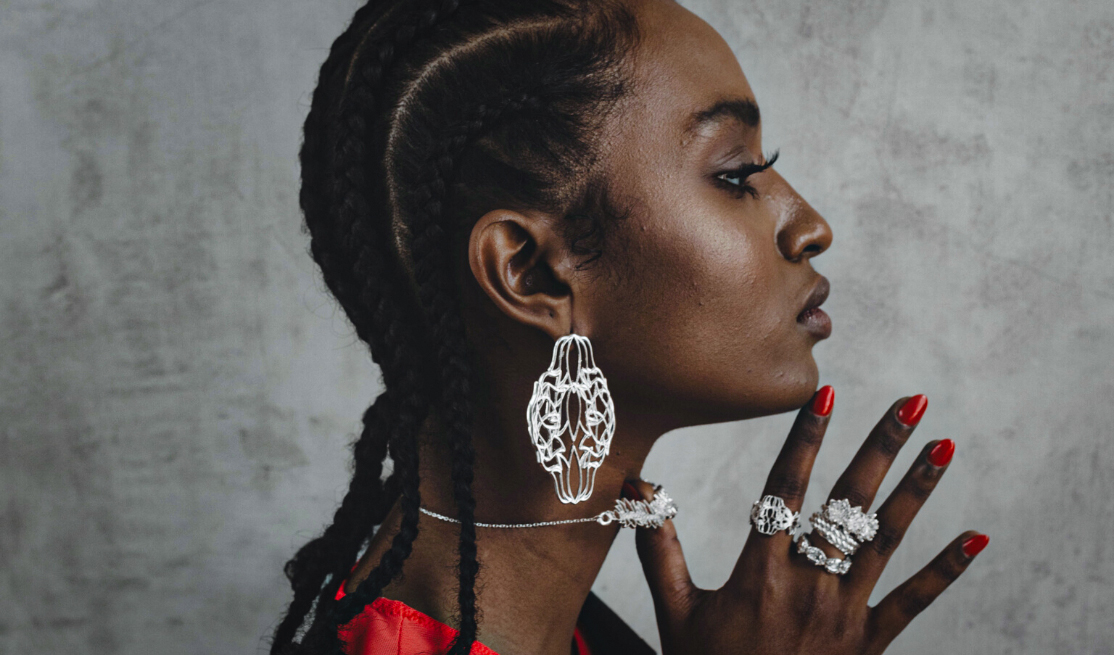
3D printing enables anyone to produce unique quality jewelry, and it gives professional jewelers a new solution for jewelry production that’s cheaper, easier, and faster. 3D printing has stepped in to disrupt the jewelry market and inspire new technology-enabled jewelry companies offering accessible custom manufacturing.
Let’s look at the advantages of 3D printing jewelry, the best software to design it, the best 3D printers to print it, as well as the top 3D printing services that can get your design 3D printed and shipped to your door.
Why 3D Print Jewelry?
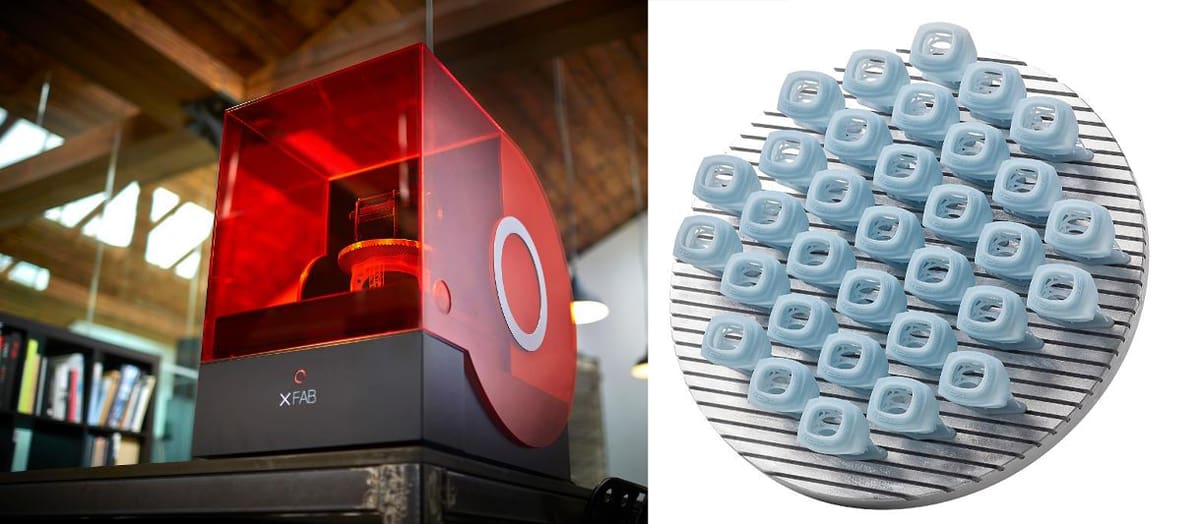
Most of the time that we talk about 3D printing jewelry, we’re referring to 3D printing the wax model that’s then used to make a mold, just like in traditional jewelry making. Although it is possible to directly 3D print in precious metals, most jewelers use 3D printers to produce models from their digital designs practically at the push of a button, replacing hours or days of hand carving and the skill required. You can print nearly a dozen models in castable wax at a time depending on the size of your 3D printer.
Using 3D printers for jewelry has many other advantages. You can use 3D printing for prototyping to make sure the finished product will be exactly what you and your customer want. This especially comes in handy if you decide to produce multiple versions of the same design. 3D printed models are also idea for trial-setting stones to ensure you’ll have the right fit.
But critical today for jewelry designers and large jewelry companies is the ability to quickly respond to trends. Jewelry is not just for special occasions anymore as younger generations wear and change their jewelry frequently, resulting in huge design variety on the market.
One company, India-based Melorra, was founded on its ability to use digitally designed jewelry and 3D printing technology to quickly respond to next-generation market demands in both men’s and women’s everyday jewelry. Launched in 2016, Melorra has quickly become one of India’s fast growing brands with the mantra to create pieces that are meant for a ‘buy-now, wear-now’ purpose. The company has invested in 3D printers for making jewelry molds that are then cast and finished by expert artisans. In and interview with the Economic Times, founder Saroja Yeramilli says,”with 3D printing, we do not have to worry about the number of orders. It gives us the power to cater to an individual order and at the same time be very cost efficient about it.”
Another company taking advantage of the benefit of 3D printing is the jewelry brand Lace, which launched a jewelry sampling program where customers can try out 3D printed versions of pieces before they commit to buying them. The company hopes this will reduce the number of returns and exchanges and all the waste associated with it.
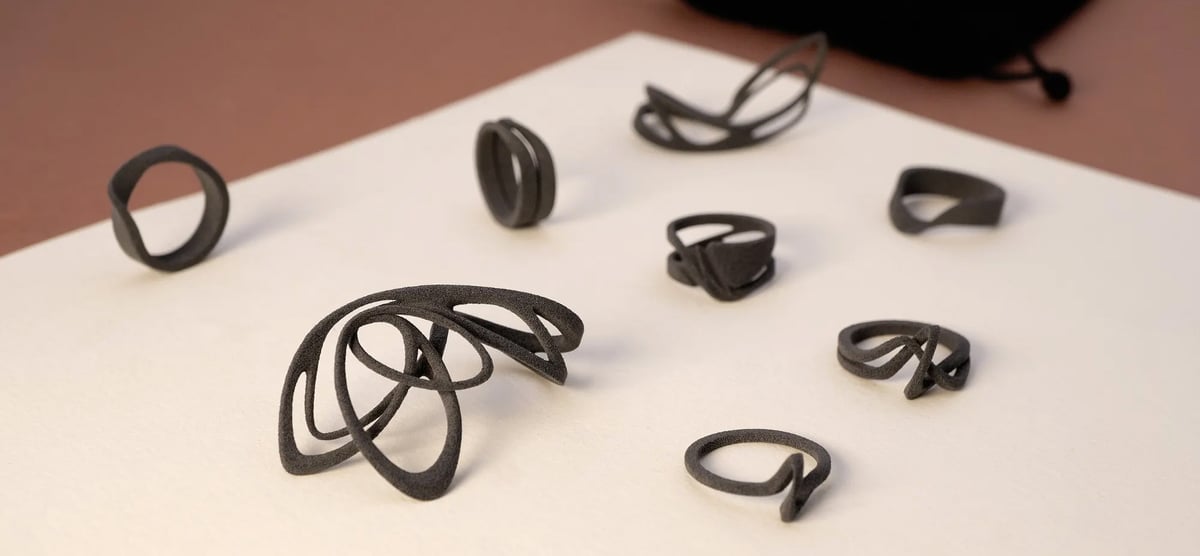
Directly 3D printing in metals has its own set of benefits. Primarily, when compared to casting from a model, 3D printing enables jewelers to create batches of items that are all unique. The entire process of creating a wax model, creating a mold from that model, then pouring the molten metal into the mold is removed, which clearly saves time.
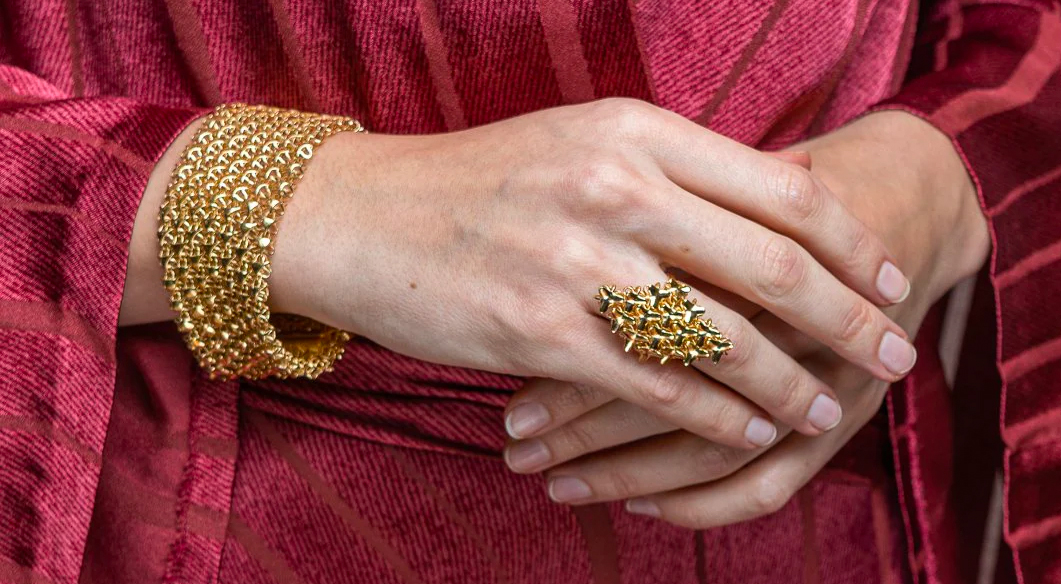
One startup directly 3D printing jewelry based digital designs created by algorithms is Boltenstern. Owner Marie Boltenstern used metal 3D printers from EOS to directly 3D print intricate, precise, repeating geometries out of precious metal powders. The company also 3D prints jewelry from a nylon polymer that’s then colored, for lighter weight yet durable pieces.
Design Your Own Jewelry
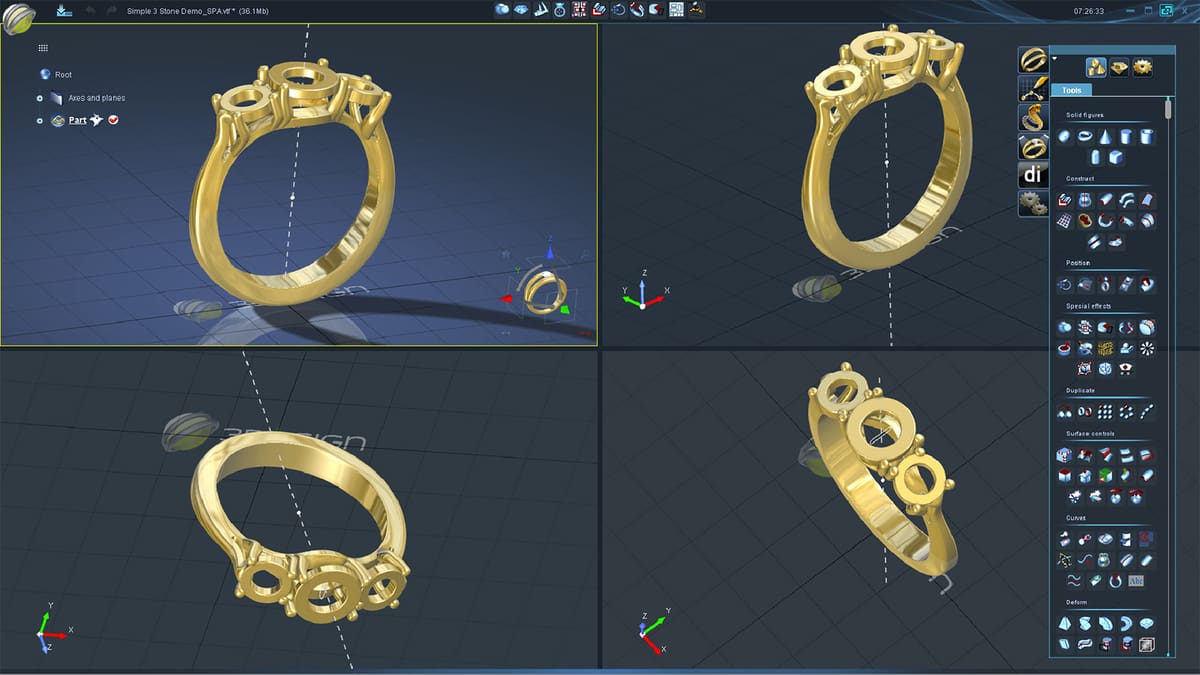
With the advent of computer aided design and the ability to then 3D print that design, practically anyone can create jewelry. You need creativity and a bit of computer skills instead of years of training in traditional jewelry arts since there are many services that will craft your jewelry directly from your digital design.
The first step in 3D printing jewelry is the digital design. If you already have a concept in mind, you then create it using computer aided design (CAD) software. Various 3D design software options are available to meet your needs. If cost is a concern, check out All3DP’s list of free CAD software for you to choose from.
If you aren’t interested in designing jewelry from scratch, editing an existing design may be more palatable. 3D design depositories such as Thingiverse and others are full of designs for you to choose from.
Looked through all the depositories but still couldn’t find the perfect design? If you want to work with an antique family heirloom or a friend’s piece that you like, try 3D scanning. There are a variety of 3D scanners to choose from, and if the price is a concern, you can download 3D scanning apps and use your smartphone as a scanner. The scan is then uploaded to CAD software for a bit of editing or handed off to a jewelry company to produce.
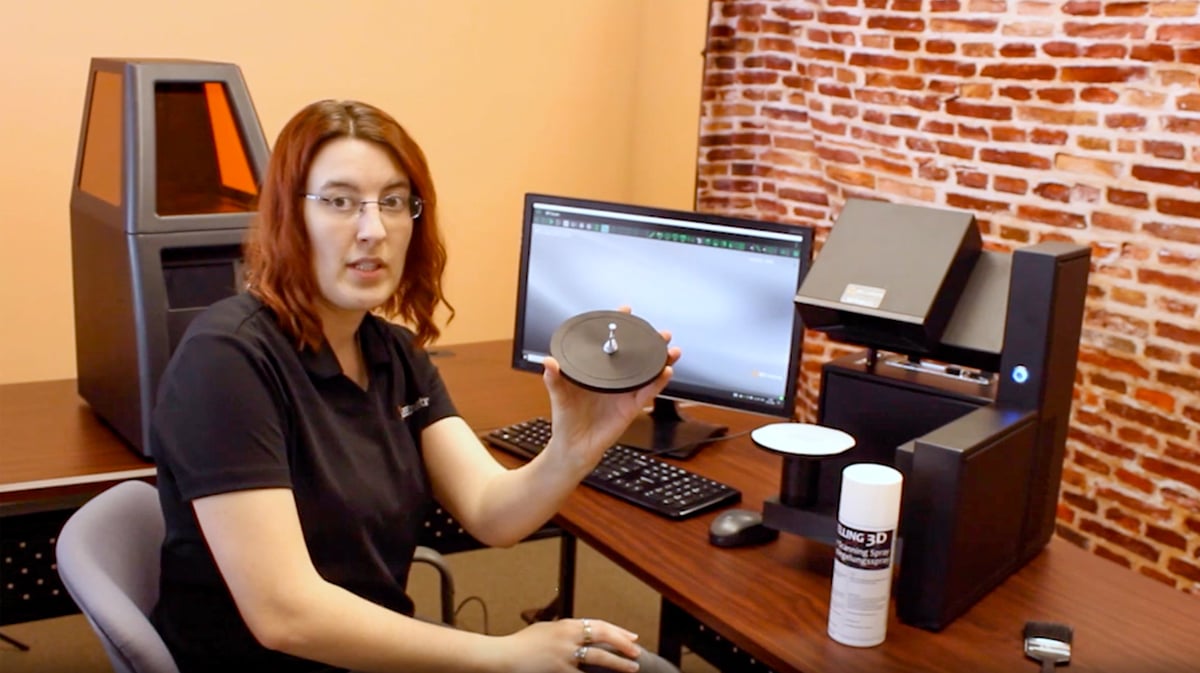
Software for Tips for Jewelry Design
CAD software is great for structural art like jewelry design. It lets you keep exact precision on the small scale that jewelry requires. Additionally, it helps establish uniformity where needed, such as in sets of earrings, wedding rings, and anything mass-produced.
Most CAD programs with a 3D modeling component can support the general idea of jewelry design. The basics and even the scale sometimes are the same as designing a small piece of machinery. You may also find non-specific 2D CAD programs useful if your designs are going to lay flat like certain types of necklace pendants.
However, if you’re looking for CAD exclusively for designing jewelry, especially on a professional level, there are a few extra considerations that’ll make your job easier:
- Jewelry-specific templates: These let you worry less about the technical components and help you to focus more on the creative parts of your design. Using a template for basic, standardized jewelry components, such as earring backs, makes it easy for you to conform to industry standards while at the same time showing off the unique aspects of your designs.
- Photorealistic modeling: Since jewelry is a visual medium, a program with 3D modeling shows you what your design will look like in the real world and will help you to spot any flaws or problems before you move on to prototyping. This will save you the heartache of discovering that something doesn’t work when you’re further along in the design process.
- Simple interface: A clean workspace with easy-to-find tools and features will minimize your learning curve and maximize your time for design.
3D Printing Jewelry
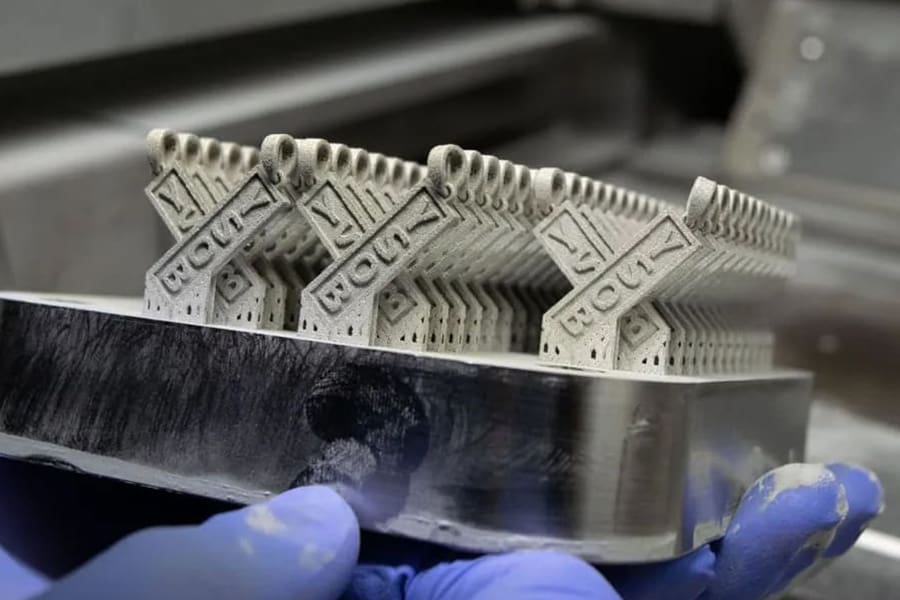
When it comes to 3D printing jewelry, we mentioned that there are two main methods: direct 3D Printing, which prints the final piece directly out of metal or plastic; and investment casting, which is 3D printing a wax model from which the piece can then be cast.
Direct 3D Printing
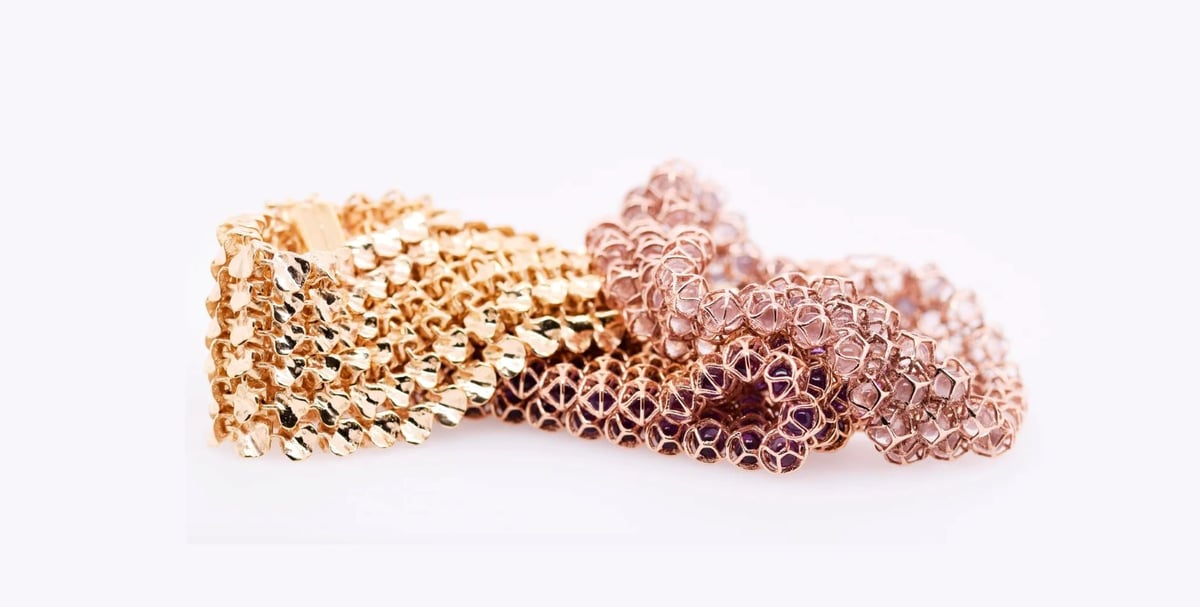
Yes, you can directly 3D print jewelry in precious metals. Most jewelers don’t use 3D printers this way because the 3D printers are not quite accessible in terms of price for independent jewelers. Some online printing services do directly 3D print in precious metals, so the technology is more in reach when you upload your digital model to an on-demand service.
Direct 3D printing involves sintering metal powder particles together with a laser using powder bed fusion techniques, otherwise known as selective laser melting (SLM) or metal laser powder bed fusion. You can also use another type of 3D printing called binder jetting, which works with metals or polymers. The type of metal available depends on the 3D printer used.
A 3D printer full of gold powder is an investment, but fortunately, the materials not used in producing one batch of jewelry can be reused for the next batch. In addition, you can also print jewelry in polymers, ceramics, and non-precious metals.
If direct 3D printing in precious metals is your goal, check out metal 3D printers from Desktop Metal, HP, ExOne, or Digital Metal. For directly 3D printing polymer jewelry, including in light-weight carbon fiber nylon or colorful plastics, check out 3D printers from Formlabs, Impossible Objects, and Stratasys.
Investment Casting
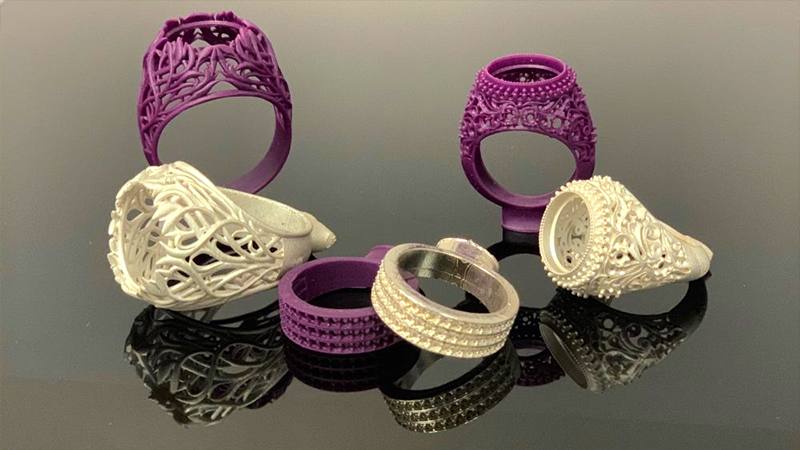
Investment Casting is the most popular method to 3D print jewelry. It combines 3D printing with traditional mold manufacturing techniques. 3D printers replace the practice of carving a hard modeling wax into your desired shape. Using a computer and jewelry design software or any computer aided design (CAD) software, a jeweler creates the design and then 3D prints a model of the piece of jewelry using wax, or other material, such as resin. Printing the castable model in resin can be accomplished through either stereolithography (SLA) or digital light processing (DLP). From this point, it’s back to the traditional process of lost wax casting.
If you’re not familiar, the lost wax method is where a wax or resin model is encased in a plaster-like medium that hardens and is then heated so the model melts away leaving a mold that’s then filled with molten precious metal. From there, it’s a traditional metal casting process. Once the metal is set and the mold is removed, the item is carefully taken out, mechanically handled, and polished.
A 3D printer not only makes it possible to create a finely detailed master model, but you can customize your digital file of the jewelry in the software in minutes and print out another model or 20 different models at once. This dramatically speeds up making iterations of designs and mass customization. This method is great because you don’t need a special form of the metal and most any metal can be used.
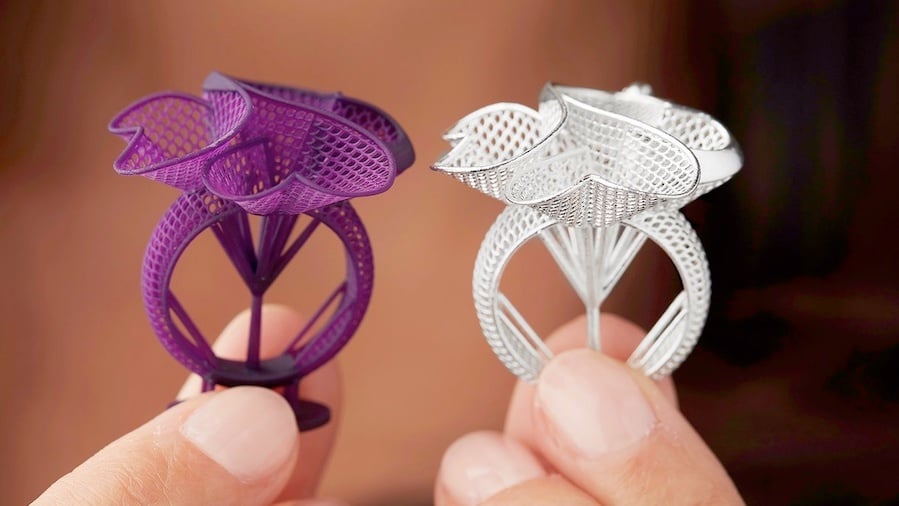
Advantages of 3D Printing Models of Your Designs:
- Speed: Simply put, 3D printing is infinitely faster than carving wax by hand. Whereas the traditional method requires you to spend hours or even days painstakingly carving the wax model, the 3D printer will produce a detailed model in a matter of hours. Plus, changes are far easier since you can simply alter the digital file and print another version.
- Complexity: 3D printers can create far more complex and intricate geometries than what are feasible to carve by hand. You can print anything your CAD software can design so it even makes great design more accessible to artists who may lack carving skills. Additionally, depending on the piece, you may even be able to produce geometries that are practically impossible through hand-carving.
- Customization: Since the original master model is stored as a digital CAD file, you’ll be able to quickly modify it based on customer requirements. You can offer both customized jewelry and easily make changes to a model if the piece’s future wearer wasn’t happy with the initial design.
- Mass Production: Depending on the capacity of your 3D printer, you may be able to print dozens of different wax models with one printing run.
- Reproduction: 3D printing adds another level of convenience in that you can reproduce old pieces of jewelry. With a 3D scanner, you can recreate an existing piece as a digital model that can then be cleaned up in a CAD software and printed out.
- Cost-Efficiency: Jewelry-scale 3D printing uses very little printing material. Although castable wax materials might be more pricey than regular printing materials, you’ll get a lot of mileage out of one material batch, which helps you cut material costs.
- Quick Prototypes: Fit stones in a 3D printed model to ensure a perfect fit and customer approval before casting the final piece. Clients can try on 3D printed models and get a truer sense of the final piece than a 2D image.
Wax & Casting Materials
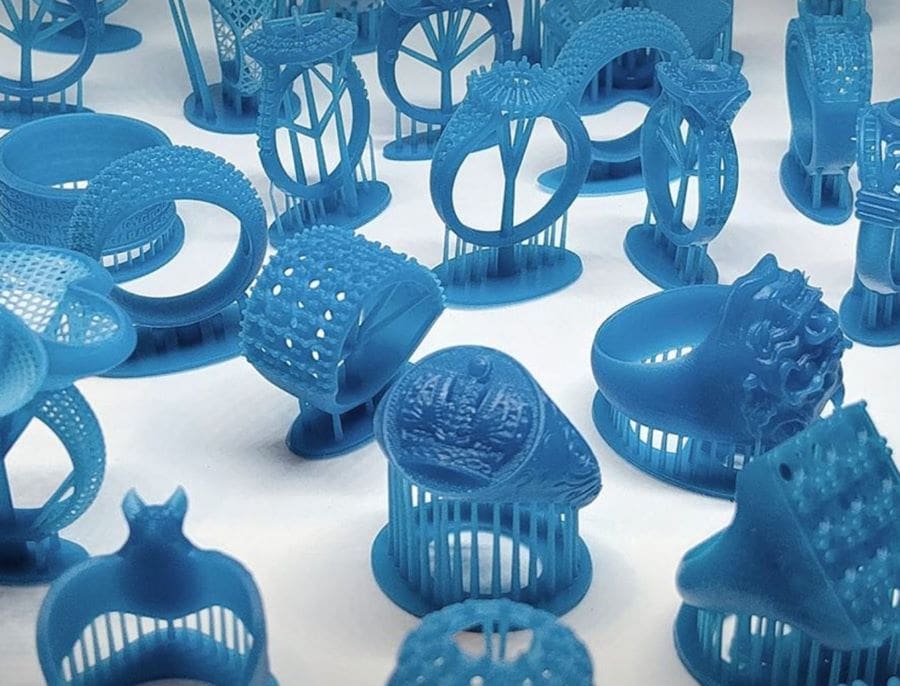
Casting materials are not all the same. Sure, you can print in pure wax, but newer materials, such as castable resins are formulated to be stronger during the casting process and burn out cleaner, among other features.
Polymethyl methacrylate (PMMA), for example, is an acrylic plastic with excellent burnout behavior that’s often used in industrial casting. These materials are not always suitable as a direct replacement for wax since some may interact negatively with phosphate-bonded and plaster-bonded investment materials. So, be sure to match your casting material with your investment material.
Your 3D printer may only be compatible with wax made by your 3D printer. But, if your printer is compatible with third-party materials, here’s what to look for when making a castable material purchase:
- Melt Time: How long does it take your wax or castable resin material to melt or burn out completely from your mold? Two hours, 5 hours?
- Ash Level: Low-ash or no-ash wax materials will leave little to no remaining ash or soot inside your mold after burnout, while others may require that you thoroughly clean your mold.
- Low Shrinkage: All waxes and castable materials shrink a bit and you need to account for this so it’s important to know the shrinkage factor, which should be listed on the materials technical data sheet.
- Low Water Absorption: Most castable resins absorb moisture if left uncovered so you’ll want to start off with one with a bit of moisture resistance, then keep it in a cool, dry place.
For more on printing in wax and other materials, check out our article 3D Printing Wax for Patterns & Models.
3D Printers for Jewelry
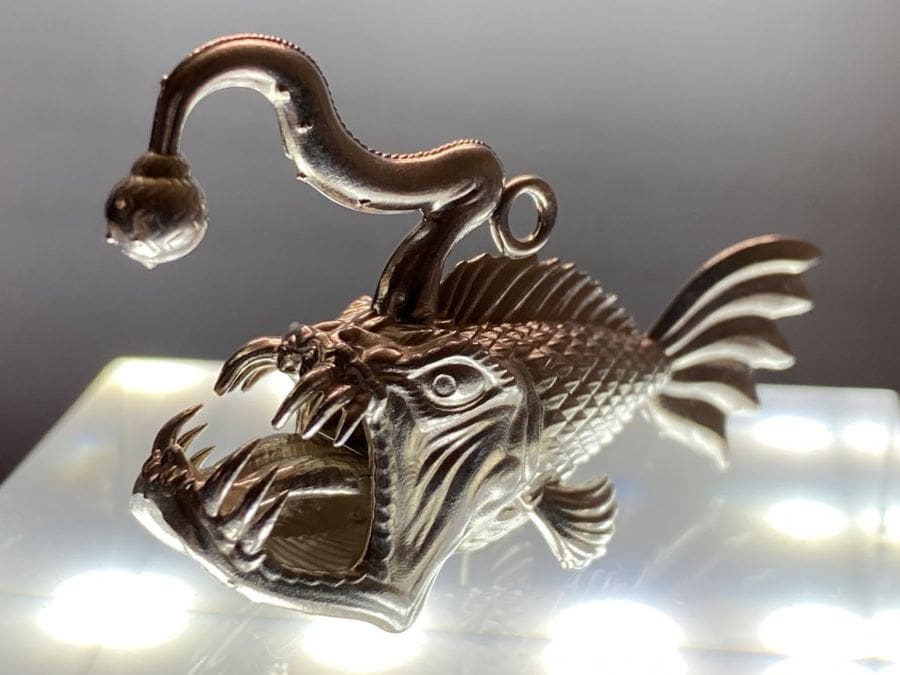
The first consideration when choosing a jewelry 3D printer is the technology. Most jewelers wanting to print models for casting opt for resin-based 3D printers due to their high printing resolution. Wax resins specifically for casting enable jewlers to print finely detailed models that will burn out cleanly.
For directly printing jewelry out of precious metal, there are fewer options. Check out our top picks for 3D printers for jewelry in this guide below:
Considerations when picking your printer:
- Resolution: Pieces of jewelry are small, so the finer the detail your printer can produce, the better. You should aim for a machine that can create the finest possible details, ideally even as small as 10 microns. For reference, the average width of a human hair is 75 microns.
- Print Speed: It’s hard to imagine a case where hand carving wax would be faster than 3D printing it, so when it comes to speed, we’re talking among 3D printers. Ideally, look for a machine that lets you adjust the speed to get super-fast but less detailed prototypes as well as extremely fine details, which typically take a bit longer.
- Material Compatibility: Opt for a printer that is not limited to one manufacturer’s materials. It might just be that the best wax resin for your purposes is made by a third party. Proprietary materials are often more expensive than third-party ones, but then again some printers are perfectly tuned to print perfectly with their own resin, which cuts down on trial and error.
- Cost: When purchasing a printer, you need to not only consider the printer’s price, but also the cost of maintenance and materials. Although a jewelry 3D printer can return your investment in a few months, it’s good to pay attention to the budget.
- Exposure: If your designs have fine features and smooth surfaces, you’ll want to be careful with LCD technology. Some LCD machines produce models with a pixelated surface, and this could translate to the final piece when cast, unless you take time to do some post-processing.
- Volume: If you only plan to make one to six models at a time, the smaller volume machines will work, but if you think you’ll be mass-customizing hundreds of rings or pendants, look for larger volume machines.
- Accessories: Your model is not good to go right from the printer. You’ll need some other equipment, such as washing and curing machines (although it’s possible to get by without them). So look for one company that offers the whole package.
No matter how good a printer sounds on paper, to evaluate a printer’s suitability for your workbench, you can ask the manufacturer for a sample print. Most will be happy to demonstrate the capabilities of their printers in practice.
No Printer? No Problem!

If you’re a start-up or a budding entrepreneur, you might not have the budget for your own metal 3D printer or casting equipment. But that doesn’t mean you can’t 3D print jewelry or your dazzling designs.
A great option is to use a 3D printing service, such as Craftcloud, All3DP’s 3D printing and price comparison service. Upload your digital model, and choose your material and surface finish (like polishing). You can sometimes even select the 3D printing technology. Some services can connect you with companies to cast your model or create your final metal pieces. We’ll provide real-time prices from a wide range of professional service providers, including Shapeways, i.Materialise, and Sculpteo, often receiving your models the next day.
_____________________________
Jewelry shown on the topmost graphic: the stack of four rings is “Crystal Rings” from Eeppium, the center black necklace is printed on a Stratasys 3D printer by jewelry designer Jenny Wu, the colorful striped bracelets are 3D printed by Stratasys, the the Elements Rainbow ring with yellow gold and gemstones is from Boltenstern,, and the triangle gold ring is from jewelry brand Blueberries.
License: The text of "3D Printing Jewelry – The Ultimate Guide" by All3DP Pro is licensed under a Creative Commons Attribution 4.0 International License.



